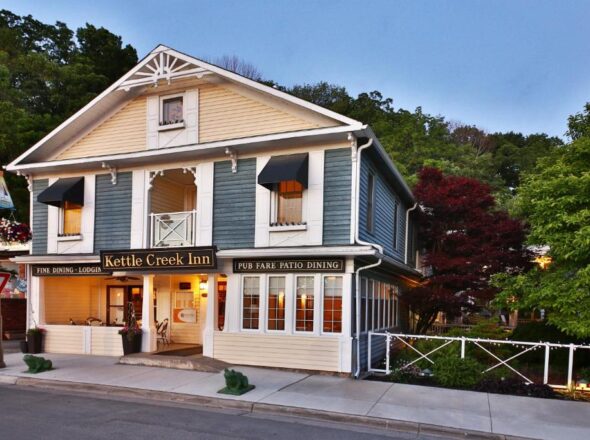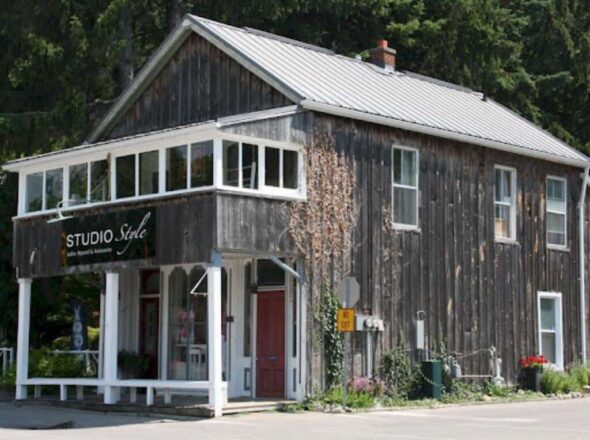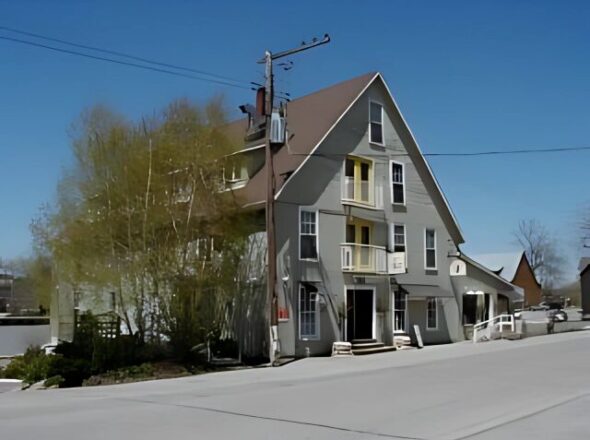Kettle Creek Inn is a historic and inviting inn with a restaurant, located at 216 Joseph Street in Port Stanley, Ontario, just a short walk from the harbor. The property blends vintage charm with modern comfort. It includes the original stone home built in 1849, two guest house wings added over time, a central courtyard, garden gazebo, and a charming patio that is ideal for relaxation and dining.
Built in the 1870s, the building originally served as a livery stable, a boarding and care facility for horses and carriages used by travelers and villagers. Heritage records confirm the address in Port Stanley’s heritage by-law, emphasizing its historical role in transportation and commerce .
The building was constructed circa 1917 by the East Side Fish Company, although it was not completed until after the fishing industry began to decline. It was never used as a fishery but served for net mending and storage. The symmetrical design and the number of windows provide east, south and west exposure to both natural light and the sun's heat in a large structure that was originally heated only by small coal stoves.
Built circa 1915 during the boom of the fishing industry, the cork kiln was important for the drying of the cork used for floating fish nets. The kiln was built into the side of the hill as a natural way to maintain dry heat. Today, it stands as a rare reminder of early industrial ingenuity on the coast. It remains one of the few surviving structures of its kind in Ontario.
The Russell House, also known as the Sweeney House, is one of Port Stanley’s oldest surviving structures, located at 211 Main Street. Built in the early 1870s from locally produced “strawberry bricks,” the building originally operated as a hotel, serving travelers arriving by rail and lake.
The Payne House was built in 1873 by Manuel Payne on the site of Col. John Bostwick's residence, and encompasses its original foundation. Built of yellow brick in the early Victorian style, it mixes the gables of Gothic Revival and the bay windows and quoining of the Italianate style. Manual Payne was a railway agent, telegraph and telephone operator, customs officer, express agent, issuer of marriage licenses, and the first postmaster of the village.
- 1
- 2











